
Benefits of Energy Efficient Windows: Save Money and Mother Earth!
Energy efficient windows are a crucial yet often overlooked aspect of creating a comfortable and cost-effective living environment. These innovative windows provide a range of benefits that extend beyond simple energy savings, enhancing the overall quality of life in homes and offices alike. From boosting thermal comfort to reducing environmental impact, the benefits of energy efficient windows offer long-term advantages that make them an attractive investment for property owners and tenants.
The fundamentals of energy efficiency in windows encompass various design factors such as insulation, solar heat gain coefficients, and energy performance ratings. Understanding these factors helps consumers make informed decisions when choosing the best windows for their needs. The combination of advanced materials, technology, and expert craftsmanship results in windows that optimize temperature control within a space, getting the most value out of the energy consumed.
By investing in energy efficient windows, homeowners not only save on their energy bills but also contribute positively to the environment. These windows minimize heat loss and reduce the need for excessive heating or cooling, lowering greenhouse gas emissions. Further, energy efficient windows provide additional functional advantages such as enhanced noise reduction and increased security, making them a holistic solution for maintaining a comfortable and eco-friendly living space.
Key Takeaways from Benefits of Energy Efficient Windows
- Energy efficient windows offer significant cost savings and improved thermal comfort for homeowners.
- Advanced materials and design techniques contribute to the eco-friendly nature of energy efficient windows.
- Beyond energy savings, these windows provide additional functional advantages like noise reduction and security.
Fundamentals of Energy Efficiency in Windows
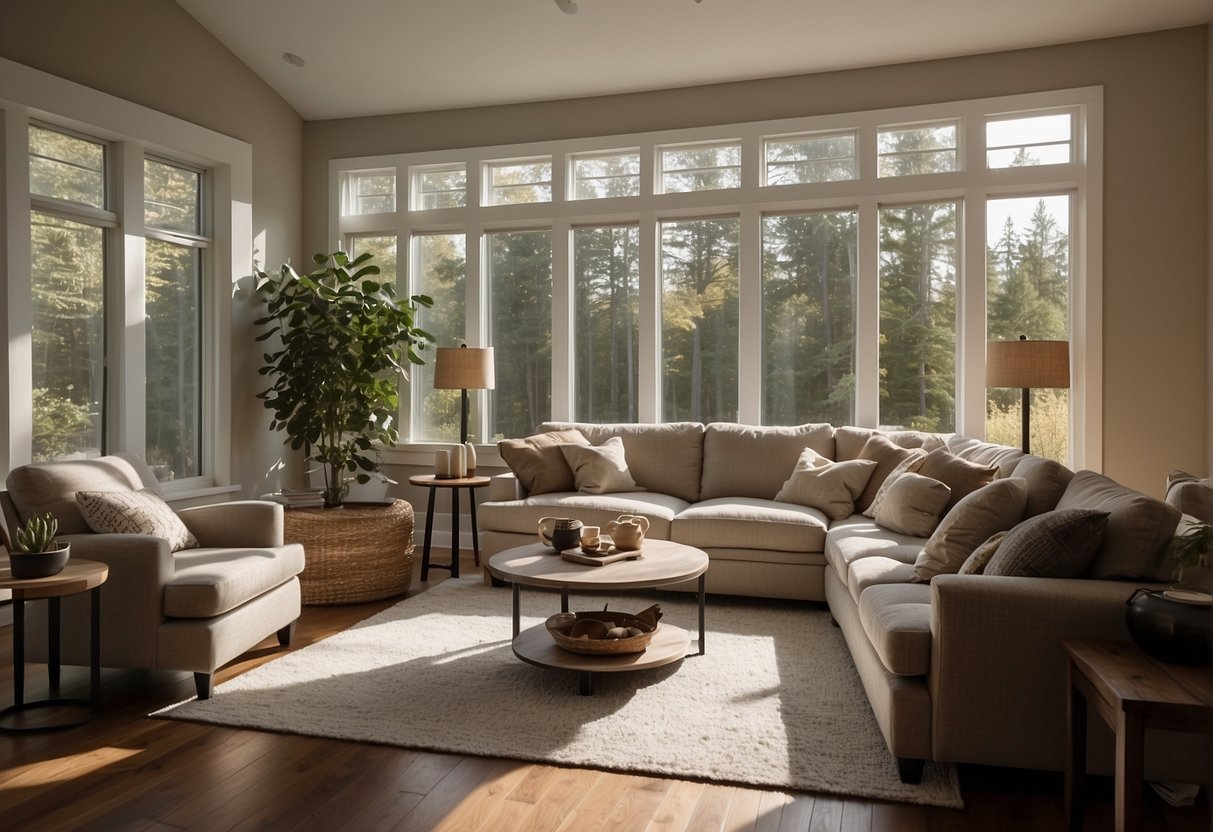
Understanding U-Factor and SHGC
When considering energy efficiency in windows, two important terms to understand are U-Factor and Solar Heat Gain Coefficient (SHGC). The U-Factor measures how well a window insulates or prevents heat loss and is expressed in a value between 0.25 to 1.25. Lower U-Factor values indicate better insulation. On the other hand, SHGC measures how much solar radiation passes through the glass, affecting the heat gain inside your home. SHGC values range from 0 to 1, with lower values meaning less heat gain.
By selecting windows with lower U-Factor and SHGC values, homeowners can experience The Benefits of Energy Efficient Windows, such as increased comfort, reduced energy bills, and better operational efficiency.
Benefits of Low-E Coatings
Low-E (low-emissivity) glass is another essential factor in energy-efficient windows. Low-E coatings are thin layers of metallic particles applied to the window surface, significantly reducing the amount of infrared and ultraviolet (UV) light penetrating through the glass. This in turn, helps lower heat transfer, improves insulation, and minimizes the fading of furniture and fabrics exposed to UV light.
Role of Frame Materials
The choice of frame material plays a crucial role in determining the window’s overall energy efficiency. Different materials exhibit diverse levels of insulation and durability, impacting the window’s performance:
Wood: It is a natural insulator and provides excellent energy efficiency. However, wood requires regular maintenance to prevent warping or rotting over time.
Vinyl: This low-maintenance and cost-effective material offers great insulation properties. Vinyl windows generally have moderate SHGC and U-Factor values.
Fiberglass: With high insulation and durability, fiberglass is resistant to warping and rotting. Its performance attributes are similar to wood, without the extensive maintenance requirements.
Aluminum: While being strong and lightweight, aluminum conducts heat rapidly, making it less energy efficient compared to other materials.
Choosing the right frame material combined with energy-efficient glass options (low U-Factor and SHGC values, Low-E coatings) significantly contributes to improving the overall energy efficiency of your windows.
Cost Savings and Economic Value
Reducing Energy Bills
Energy-efficient windows can help homeowners save a significant amount on their utility bills. By improving insulation and reducing heat transfer, these windows decrease the amount of energy needed to heat or cool a home. Consequently, this has a direct impact on electricity and gas expenses. On average, homeowners can expect to save 15-25% on their annual utility bills by upgrading to energy-efficient windows.
Increasing Property Value
Energy-efficient windows not only offer cost savings with utility bills but also add value to a property. Prospective homebuyers are attracted to houses that include energy-efficient features, especially when it comes to reducing long-term costs. Property values can potentially increase by up to 10% when energy-efficient windows are installed.
Cost of Installation vs Long-Term Savings
While the initial investment in energy-efficient windows can be significant, the long-term savings and added value to a property offset this cost. Here’s a simple breakdown:
- Installation Cost: The cost of installing energy-efficient windows can vary depending on factors like window size, type, and region. On average, prices can range from $200 to $1,000 per window.
- Longevity: Energy-efficient windows are designed to last for decades. With proper maintenance, they can remain in excellent condition for 20 to 30 years.
- Savings: As mentioned earlier, homeowners can save between 15-25% on their annual utility bills. Over the lifetime of the windows, these savings can add up to thousands of dollars.
Considering the cumulative savings on energy bills, increased property value, and the longevity of energy-efficient windows, the initial investment pays off in the long run.
Enhanced Home Comfort and Living
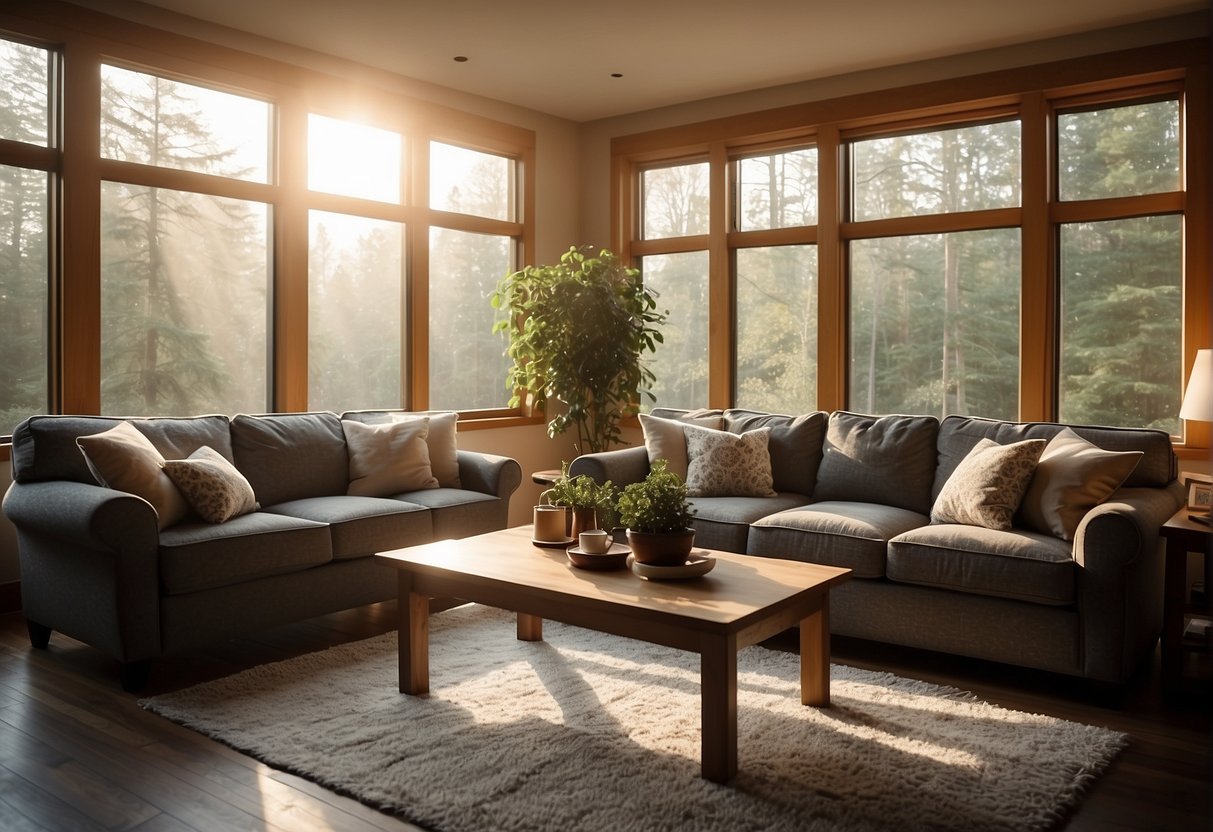
Improved Indoor Climate Control
Energy-efficient windows play a key role in improving a home’s indoor climate control. They provide better insulation, dramatically reducing drafts and maintaining consistent room temperatures. Moreover, these windows help in regulating the indoor temperature by preventing heat loss in winters and minimizing heat gain in summers. This contributes to a more comfortable living environment for the occupants. The Surprising Benefits of Energy Efficient Windows report states that consistent comfort is one of the most important factors in making a house feel like a home.
Noise Reduction and Privacy
In addition to thermal comfort, energy-efficient windows are also known for their noise reduction properties. The use of double or triple-pane glass and added insulation material helps to block external noise, providing homeowners with a quieter and more peaceful environment. This benefit greatly contributes to the feeling of privacy in a home, improving the overall living experience for its occupants.
Benefits in All Seasons
The advantages of energy-efficient windows are not limited to any particular season; these windows provide year-round comfort and energy savings. Here is a brief overview of the seasonal benefits:
- Winter: These windows reduce heat loss, leading to warmer indoor temperatures and reduced heating costs.
- Summer: They minimize heat gain by reflecting sunlight, which helps maintain a cooler interior and decreases the need for air conditioning.
- Spring and Fall: Energy-efficient windows aid in maintaining a balanced temperature by minimizing drafts and fluctuations, providing a comfortable living environment during transitional seasons.
In summary, energy-efficient windows are essential for enhancing home comfort and fostering a sustainable lifestyle. They not only contribute to better climate control but also create a quieter, more private living space for homeowners to enjoy throughout the year.
Environmental Impact
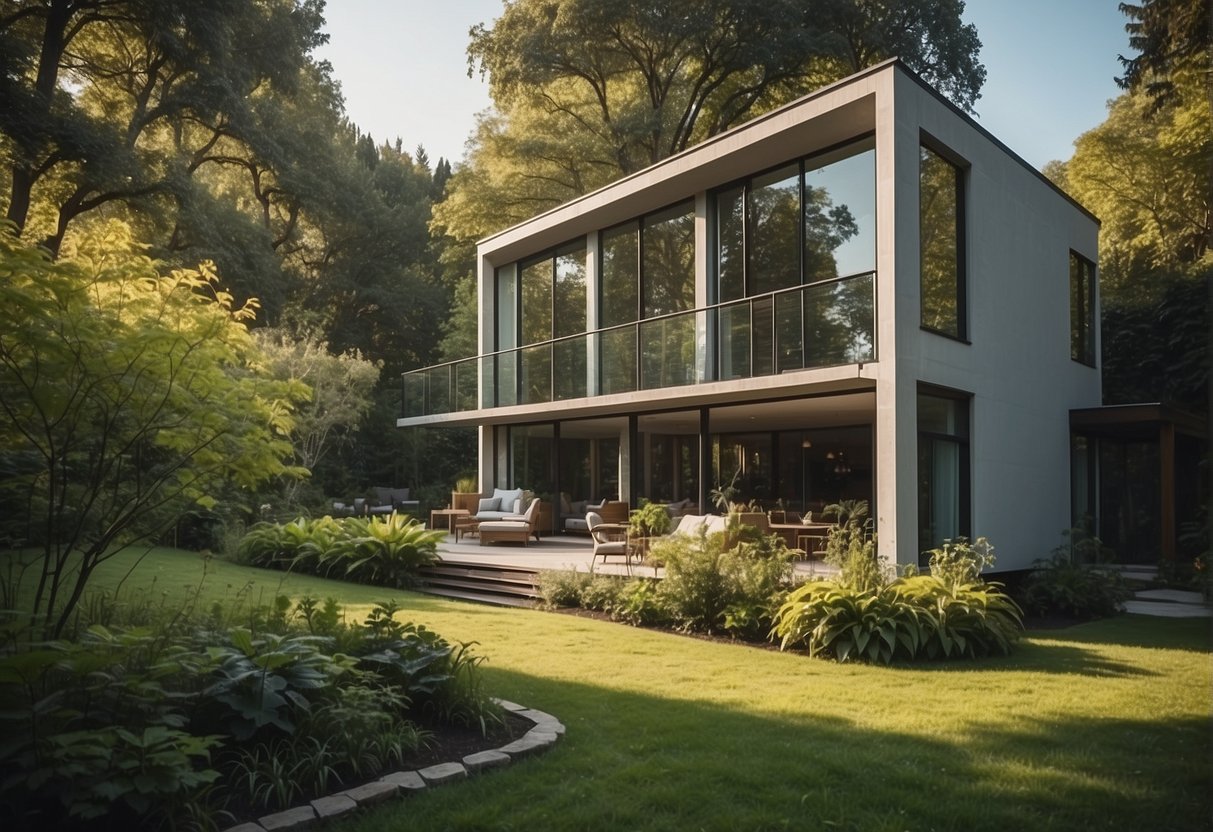
Reduction in Greenhouse Gas Emissions
Imagine having fewer greenhouse gas emissions in the atmosphere. Well, energy efficient windows can help with that! They play an essential role in reducing a building’s carbon footprint. It’s simple: when less energy is consumed for heating and cooling, there’s a decrease in greenhouse gas emissions from power plants.
A cool little fact is that good-quality energy efficient windows can reduce the energy needed for heating by up to 20%. That means less carbon dioxide is emitted into the environment! Here’s a quick summary of how energy efficient windows help in reducing greenhouse gas emissions:
- Less energy consumption: With better insulation, less energy is used for heating and cooling.
- Reduced carbon dioxide emissions: Less energy usage leads to fewer emissions from power plants.
- Positive environmental impact: Using fewer fossile fuels contributes to cleaner air and a healthier environment.
Promoting Environmental Sustainability
Aside from reducing greenhouse gas emissions, energy efficient windows also promote environmental sustainability in several ways. Let’s take a look at how they contribute to a greener future:
- Recyclable materials: Some energy efficient windows are made of recyclable materials like aluminum, which can be reused and repurposed.
- Longer lifespan: High-quality windows generally last longer, reducing the need for frequent replacements and lessening the demand on natural resources.
- Responsible manufacturing: Many companies invest in sustainable manufacturing practices and use less harmful materials.
In the long run, installing energy efficient windows reduces the strain on natural resources and helps keep the Earth’s ecosystems in good shape. It’s a small step, but it goes a long way in taking care of our beautiful planet.
Additional Functional Advantages
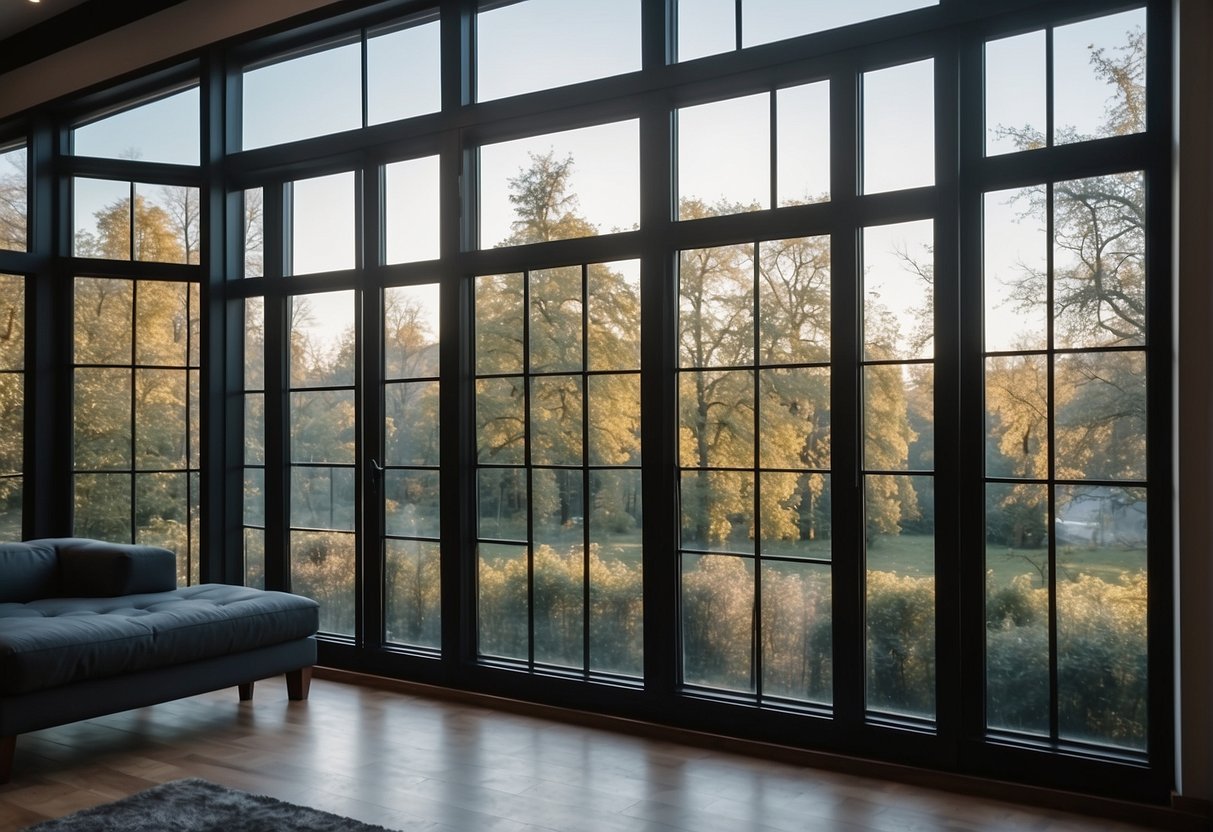
Security and Safety Features
Energy efficient windows don’t just improve your home’s insulation; they also come with enhanced security and safety features. Most of these windows have multiple locking points to ensure a strong, secure seal while helping to prevent break-ins. Additionally, the durable materials used in their construction resist impact and harsh weather conditions, providing peace of mind for homeowners.
Maintenance and Durability
One of the many perks of energy efficient windows is their low maintenance requirements. Thanks to their strong, high-quality materials, these windows can withstand years of use without showing significant signs of wear and tear. This durability translates into fewer repairs and replacements compared to traditional windows, ultimately saving homeowners both time and money.
Energy efficient windows also:
- Resist warping, fading, and chipping
- Minimize the infiltration of dirt and dust
- Require fewer cleanings than ordinary windows
Specialized Treatments and Coatings
Energy efficient windows often come with advanced treatments and coatings designed to boost their effectiveness even further. Low-E coatings, for example, are thin, transparent layers applied to the glass that help reflect heat back into your home during the winter and keep it out during the summer. This results in more comfortable, energy-saving indoor environments year-round.
Another option is window films. These are applied to the surface of the window glass and can effectively block harmful UV rays, decreasing heat build-up inside homes and businesses. Furthermore, solar control film helps to keep sunrooms and conservatories cool even during the hottest of months.
In summary, energy efficient windows offer a range of additional functional advantages, including enhanced security features, increased durability, and specialized treatments that help homeowners save money and maintain a comfortable indoor environment.
Understanding Energy Performance Ratings
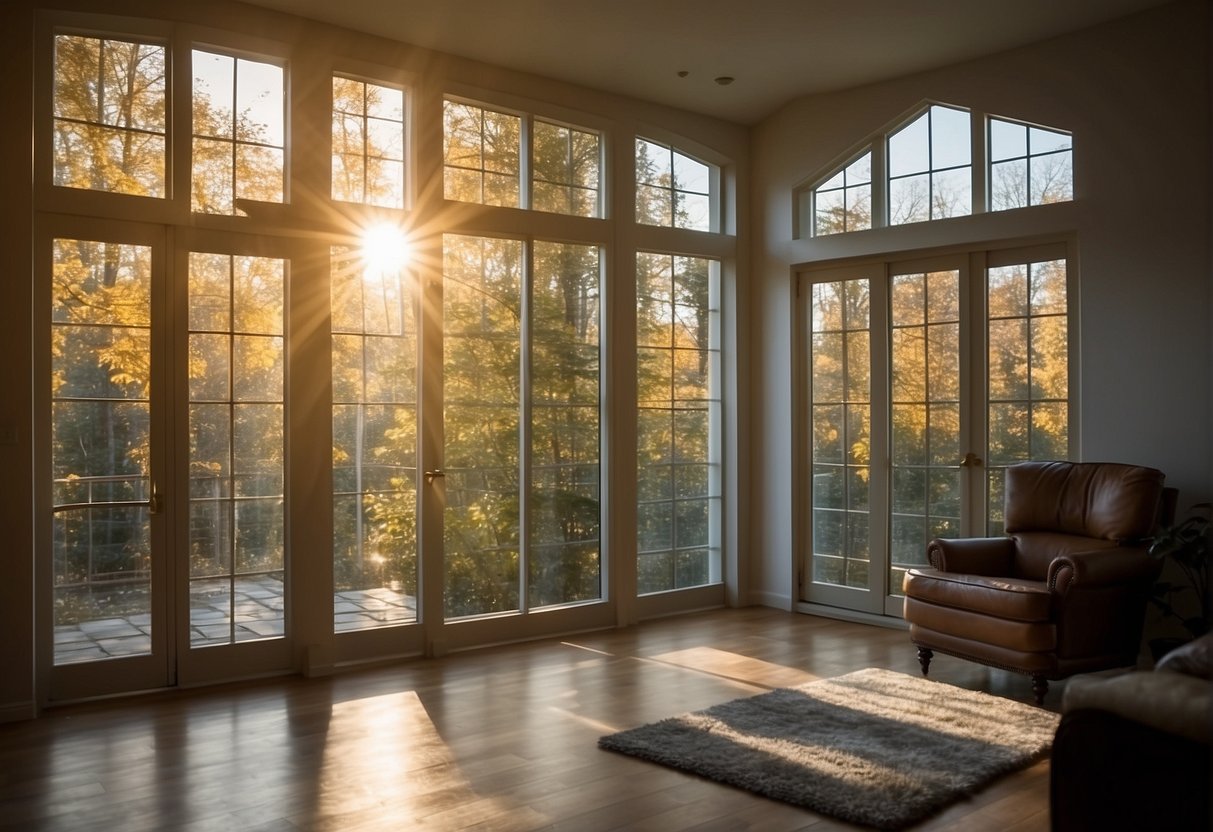
When it comes to selecting energy-efficient windows, understanding energy performance ratings is crucial for making informed decisions. This section will delve into the significance of two major rating labels: the National Fenestration Rating Council (NFRC) label and the Energy Star certification.
The NFRC Label Explained
The National Fenestration Rating Council is an independent organization that develops standardized methods for evaluating the energy performance of fenestration products, such as windows, doors, and skylights. The NFRC label provides consumers with reliable information on the energy efficiency of these products, making it an essential tool for comparison purposes.
This label displays several important ratings, including:
- U-Factor: Measures the rate of heat transfer and indicates how well the window insulates.
- Solar Heat Gain Coefficient (SHGC): Represents the fraction of solar radiation admitted through the window, and indicates how well the product blocks heat from sunlight.
- Visible Transmittance (VT): Refers to the amount of visible light that passes through the window, which is important for daylighting.
- Air Leakage (AL): Indicates the amount of air that infiltrates through the window.
Interpreting Energy Star Certification
The Energy Star certification is another key label to be aware of when selecting energy-efficient windows. Developed by the U.S. Environmental Protection Agency (EPA), the Energy Star label indicates that a product meets specific energy performance criteria, which vary depending on the climate zone in which the product is intended for use.
Energy Star certified products typically have higher energy performance compared to non-certified products, resulting in lower energy bills and increased indoor comfort. By installing Energy Star certified windows, doors, and skylights, homeowners can save money on energy costs, reduce greenhouse gas emissions, and contribute to a more sustainable environment.
In conclusion, understanding both the NFRC label and Energy Star certification is essential for making informed decisions about the energy performance of windows, doors, and skylights. These labels provide useful information that can guide you towards selecting products that are better suited for your specific needs and, ultimately, help you reduce your home’s overall energy consumption.
Luxury Specialist at McGraw Realtors
With a diverse background, including a career as an Air Force fighter pilot and entrepreneurship, Bill transitioned to real estate in 1995. Co-founding Paradigm Realty with his wife, Charlene, he quickly rose to prominence in Oklahoma City’s luxury real estate scene. Now, as one of the top agents with annual sales surpassing $20 million, Bill’s dedication to exceptional service remains unparalleled. With a legacy spanning over two decades in the industry, Bill’s expertise and commitment make him a trusted name in luxury real estate.